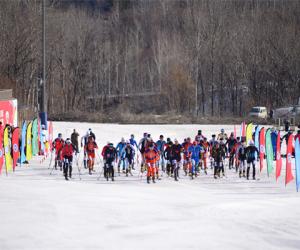The Tea-Horse Road starting in Pu’er and running north and west all the way to Lhasa was the longest and most important of the various ‘Tea-Horse’ routes, yet it was just one amongst numerous lesser branches, shortcuts and side-turns. Rather like the main channel of a river, it gained traffic from tributaries as it progressed north and west. Subsequently it would lose traffic on the way back as traders returned to their own towns and villages.
In its initial stages, the road ran north from Pu’er to Jinggu before turning west to cross the Lancang (Mekong) near Douge. It then headed north across mountainous country to Lincang, Yunxian and Nanjian, closely following the route currently taken by Highway 214 between Jinghong and Xiaguan. Today Route 214 continues east, through Midu, to Xiaguan, but in times past the main Tea-Horse Road ran more to the west, along the narrow valley dominated by the predominantly Hui Muslim centre of Weishan, over the pass at Dacang, and down to a major junction at Xiaguan City by the southern shores of Lake Er Hai.
From Xiaguan a Tea-Horse spur road ran southwest to Burma via Yongping, Baoshan and Tengchong – a route paralleled for much of its distance by today’s Highway 320, crossing the Nujiang (Salween River) west of Baoshan and continuing to Ruili and the eastern frontier of Burma (Myanmar). Just south of Xiaguan another route led east to Kunming, the provincial capital – today traces of the old cobbled road are readily discernable from the broad, four-lane superhighway that has cut journey time between Xiaguan and Kunming to a mere four hours. But the main Tea-Horse route continued north, again following the contemporary Highway 214, by the west bank of Lake Er Hai, to the ancient walled city of Dali, from1856-72 the capital of Du Wenxiu’s breakaway Hui Muslim state styled Ping Nan Guo, the ‘Kingdom of the Peaceful South’.
In fact the trade of the entire region between Pu’er and Dali, extending west as far as Tengchong and north to the confines of Lijiang, has traditionally been dominated by Hui Muslim merchants. Today Hui restaurateurs, hoteliers and transport firms are still present and conspicuously successful, while in times past Hui Muslim traders, operating the so-called Huihui mabang or ‘Muslim mule-caravans’, were responsible for most of the regional tea trade.
North of Old Dali the route continued through the market town of Jianchuan, once an important bazaar on the old Tea-Horse Road, to the ancient city of Lijiang, cultural centre of the Naxi people and of their mountain neighbours, the Yi. Lijiang was (and is) a cultural crossroads, where Tibetan traders from the northwest congregate to do business with the local Naxi, Yi, Hui and of course the dominant Han Chinese, in the shadow of magnificent Yulong Xueshan or ‘Jade Dragon Snow Mountain’, a permanently snow-capped, 5,596m peak that symbolically marks the start of the long road to Tibet. Today Lijiang is extraordinarily prosperous due to its tourist appeal, and the town is filled with shops selling elaborately-pressed cakes of Pu’er tea. An elegant tea house sits by the shore of Black Dragon Pond to the north of town, the snow-covered peak of Yulong Xueshan reflected in the still waters. There can be few more evocative places to sip locally-produced Pu’er tea and ponder the long and heroic history of the Tea-Horse Road.
Beyond Lijiang the route continues northwest, followed closely by Highway 214 all the way to the Tibetan city of Chamdo. It passes close to the celebrated ‘First Bend’ of the Chang Jiang or Yangzi River, known in these western regions as Jinsha Jiang, the ‘River of Golden Sands’. Next it enters the extraordinarily deep and narrow Hutiao Xia or ‘Tiger-leaping Gorge’, where the Yangzi is channelled north through a series of powerful rapids for 15km beneath towering 2,000 metre cliffs. Considered by some experts to be the deepest river canyon in the world, the narrow track of the former Tea-Horse Road still clings precariously to the upper cliffs, thousands of feet above the waters roiling below.
After Tiger-Leaping Gorge the route continues northwest to Zhongdian, still part of Yunnan Province but also the capital of Deqin Autonomous Tibetan Prefecture, and culturally a part of Tibet. In 2001 Zhongdian was officially renamed ‘Shangri La’ (Xianggelila) after the fictional mountain utopia in James Hilton’s 1933 novel Lost Horizon – but its Tibetan population still call it Gyalthang. Today an increasingly popular tourist destination, it is distinguished by the 300-year-old Ganden Sumtseling Monastery, and has a distinctly Tibetan aura. In times past, it is likely that much of the Tea-Horse traffic in this region – and, indeed, north of Lijiang – was carried by Naxi and Tibetan muleteers, though some Hui caravans undoubtedly continued all the way to Lhasa, where a settlement of Hui – known locally as gya khache or ‘Chinese Muslims’ – has long existed in that city’s Wapaling (Hebalin) Quarter. Meili Xueshan looms over Dequen on the Yunnan-Tibet frontier, 1920s
After Zhongdian, the route follows Highway 214 through high, increasingly narrow mountain valleys to the small town of Deqin, near the frontier of China’s Tibetan Autonomous Region. Deqin is still more than 60 percent ethnically Tibetan (compared with a Han Chinese population of around 20 percent) and at the height of the Tea-Horse trade was part of the traditional eastern Tibetan realm of Kham. Deqin is located in the shadow of awesome Meili Xueshan, known in Tibetan as Kawakarpo, at 6,740m the highest mountain in Yunnan. A sacred pilgrimage destination for Tibetan Buddhists, it has a reputation for being cruel and inaccessible – a group of seventeen experienced Chinese and Japanese climbers attempting the summit in 1991 were all killed in a night-time avalanche – and still the peak remains unclimbed, as do all significant surrounding summits.

Tea-Horse Road, Tiger-Leaping Gorge, Yunnan, Peter Goullart, c. 1940
The Meili Xueshan range is part of the Hengduan Shan, a defining point on the old Tea-Horse trail marking the eastern edge of the Tibetan Plateau. Largely covered in coniferous forests and home to a diverse and complex range of species including the endangered Giant Panda, the region is sparsely inhabited, very inhospitable and difficult to cross. The old Tea-Horse Road, now followed almost exactly by Highway 214 – also known as the Yunnan-Tibet Highway – cuts north from Deqin, crossing the current Tibetan frontier, and continues through the small and isolated settlement of Yanjing before reaching, at last, the pivotal Tibetan market town of Markam (in Chinese: Mangkang), once one of the most important junctions on the Tea-Horse Road, where tea caravans from Yunnan met up with tea caravans from Sichuan before continuing west, to Lhasa and beyond.







